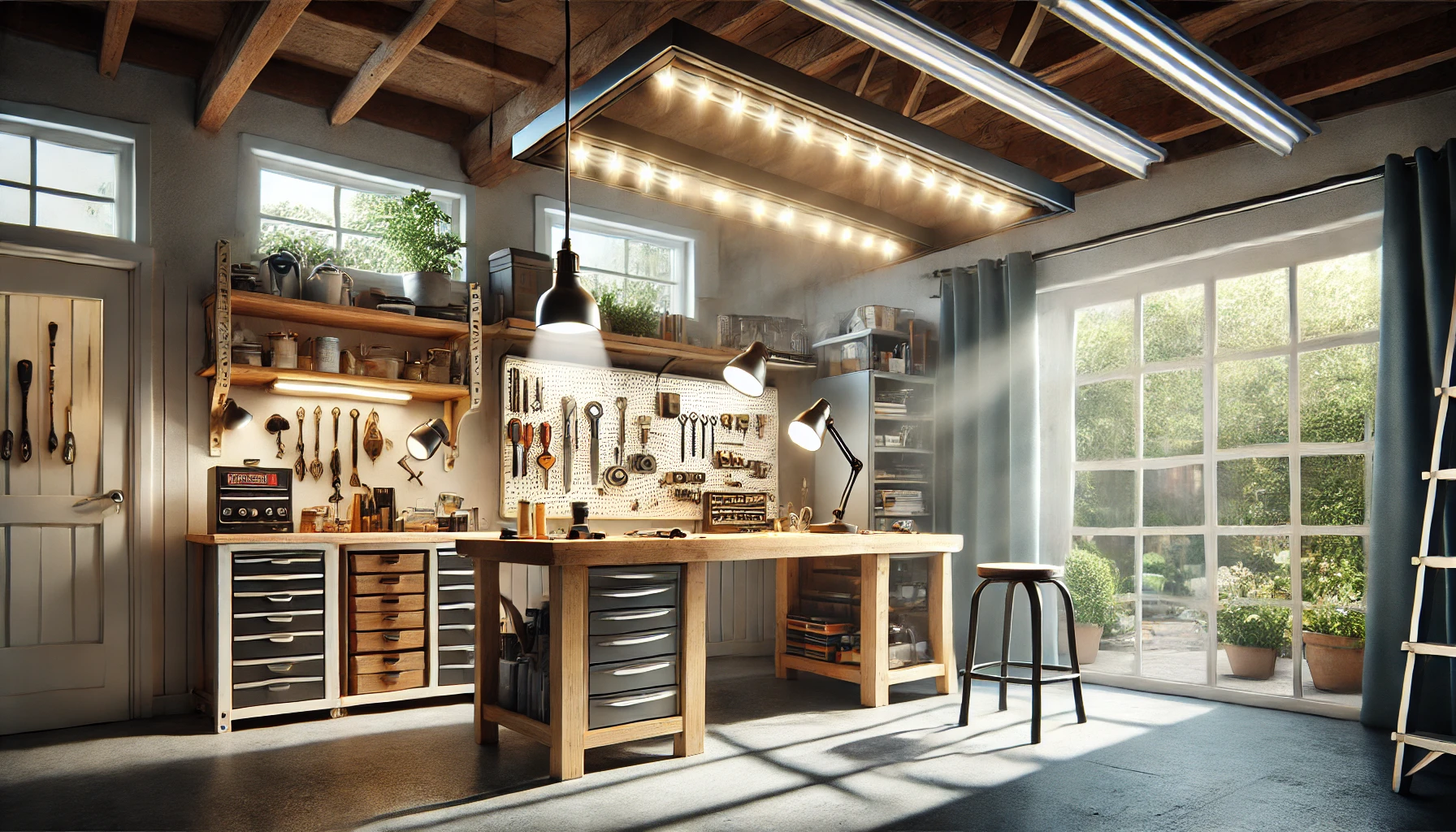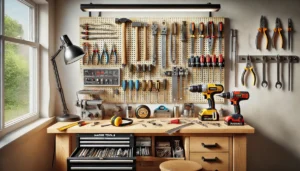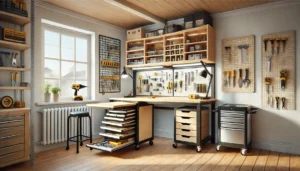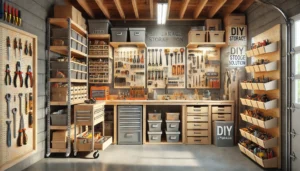
Proper lighting is essential in any workshop, as it can significantly impact your productivity, safety, and overall working experience. In a small workshop, effective lighting becomes even more critical, as it can make the space feel larger and more functional. In this article, we’ll explore various lighting tips and solutions to help you create a well-lit and efficient small workshop.
The Importance of Proper Lighting
Good lighting in a workshop offers numerous benefits, including improved visibility, enhanced precision, and a safer working environment.
Improved Visibility:
Proper lighting ensures that you can see your work clearly, reducing the risk of mistakes and improving the quality of your work.
Good visibility is essential for detailed tasks, such as cutting, assembling, and finishing projects.
Enhanced Precision:
Adequate lighting allows you to work with greater precision and accuracy. This is particularly important for tasks that require fine motor skills and attention to detail.
Proper lighting can also reduce eye strain and fatigue, helping you work more comfortably and efficiently.
Safer Working Environment:
Good lighting reduces the risk of accidents and injuries by making it easier to see tools, materials, and potential hazards.
A well-lit workshop can also help prevent trips, slips, and falls, creating a safer and more functional workspace.
Types of Lighting for Workshops
Ambient Lighting:
Ambient lighting provides general illumination for your workshop. It should be bright enough to light up the entire space without creating harsh shadows.
Ceiling-mounted fixtures, such as fluorescent lights or LED panels, are common choices for ambient lighting in workshops.
Task Lighting:
Task lighting focuses on specific work areas, providing additional illumination for detailed tasks. It helps reduce shadows and ensures that you can see your work clearly.
Adjustable task lights, such as desk lamps or clamp-on lights, are ideal for workbenches and other workstations.
Accent Lighting:
Accent lighting adds visual interest and highlights specific areas or features in your workshop. While not essential, it can enhance the overall look and feel of your space.
Track lighting or spotlights can be used to highlight artwork, display shelves, or other focal points in your workshop.
Natural Lighting:
Natural lighting from windows or skylights can enhance the overall lighting in your workshop. It provides a soft, diffused light that can make the space feel more open and inviting.
If possible, position your workstations near windows to take advantage of natural light during the day.
Tips for Effective Workshop Lighting
Layer Your Lighting:
Use a combination of ambient, task, and accent lighting to create a well-lit and functional workshop. Layering your lighting ensures that you have adequate illumination for different tasks and activities.
Consider installing dimmer switches to adjust the brightness of your lights based on your needs.
Use Energy-Efficient Lighting:
Opt for energy-efficient lighting solutions, such as LED lights, to reduce energy consumption and lower your utility bills. LED lights are long-lasting, energy-efficient, and provide bright, consistent illumination.
Replace outdated fluorescent or incandescent bulbs with LED equivalents for improved efficiency and performance.
Position Lights Strategically:
Position your lights strategically to minimize shadows and ensure even illumination. Place ambient lights on the ceiling to provide general lighting, and use task lights to focus on specific work areas.
Avoid placing lights directly behind you, as this can create shadows on your work surface.
Choose the Right Color Temperature:
The color temperature of your lights can affect the look and feel of your workshop. Cool white or daylight bulbs (5000K-6500K) provide a bright, crisp light that is ideal for detailed tasks and workspaces.
Warm white bulbs (2700K-3000K) create a softer, more relaxed atmosphere and can be used for accent lighting or general illumination.
Consider Adjustable Lighting:
Adjustable lighting solutions, such as desk lamps or clamp-on lights, allow you to direct light where you need it most. This can be especially useful for tasks that require focused illumination.
Look for lights with adjustable arms or swivel heads for maximum flexibility.
Minimize Glare:
Minimize glare by positioning lights at an angle to your work surface rather than directly overhead. This can help reduce eye strain and create a more comfortable working environment.
Use diffusers or shades to soften the light and reduce glare.
Maintaining Your Lighting
Regular Cleaning:
Keep your lights clean and free of dust to ensure maximum brightness and efficiency. Regularly wipe down light fixtures, bulbs, and covers to remove dirt and debris.
Replace Burnt-Out Bulbs:
Replace burnt-out bulbs promptly to maintain consistent lighting in your workshop. Keep spare bulbs on hand so you can quickly replace them as needed.
Check Wiring and Connections:
Periodically check the wiring and connections of your light fixtures to ensure they are in good condition. Loose or damaged wires can create safety hazards and reduce the effectiveness of your lighting.
Personalizing Your Space
Finally, don’t forget to add personal touches to your workshop to make it a space you enjoy spending time in. This can include decorating with posters, adding a comfortable chair, or setting up a sound system for music.
Decorations:
Add motivational posters or artwork to your walls to inspire creativity. Personalize your pegboard with colors or designs that reflect your style.
Comfort:
Invest in a comfortable chair or stool for those long hours spent working on projects. Ensure your workspace is ergonomically designed to reduce strain and fatigue.
Entertainment:
Set up a small sound system or speakers to listen to music, podcasts, or audiobooks while you work. Having entertainment can make the time spent in your workshop more enjoyable and productive.
Proper lighting is essential for creating a functional, safe, and enjoyable workshop. By using a combination of ambient, task, accent, and natural lighting, you can ensure that your small workshop is well-lit and efficient. Implement these lighting tips and solutions to enhance your workspace and improve your overall working experience. Embrace the challenge and enjoy the process of creating a workshop that meets your needs and inspires your projects.



